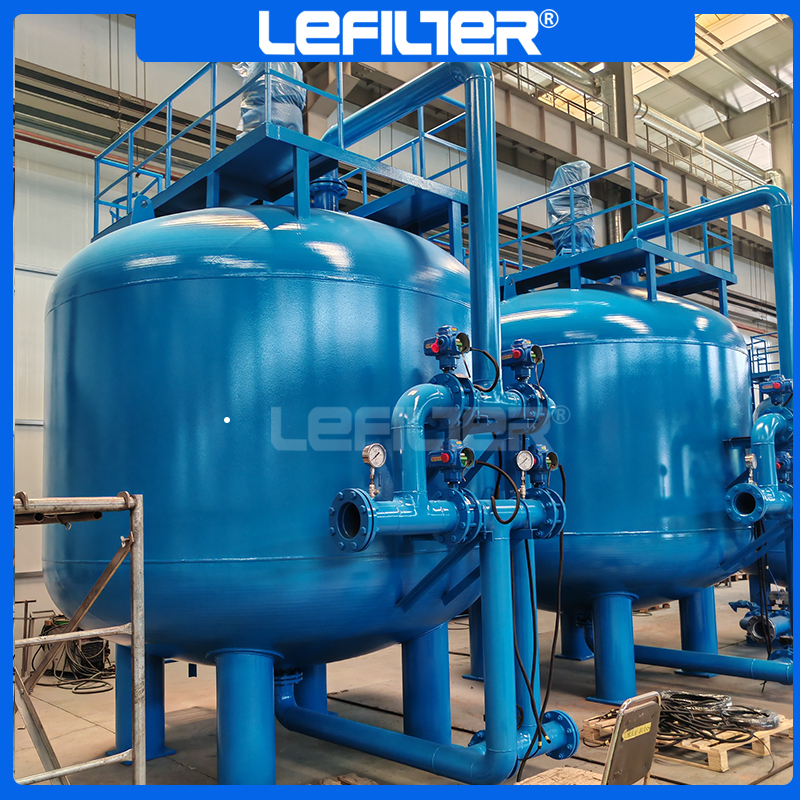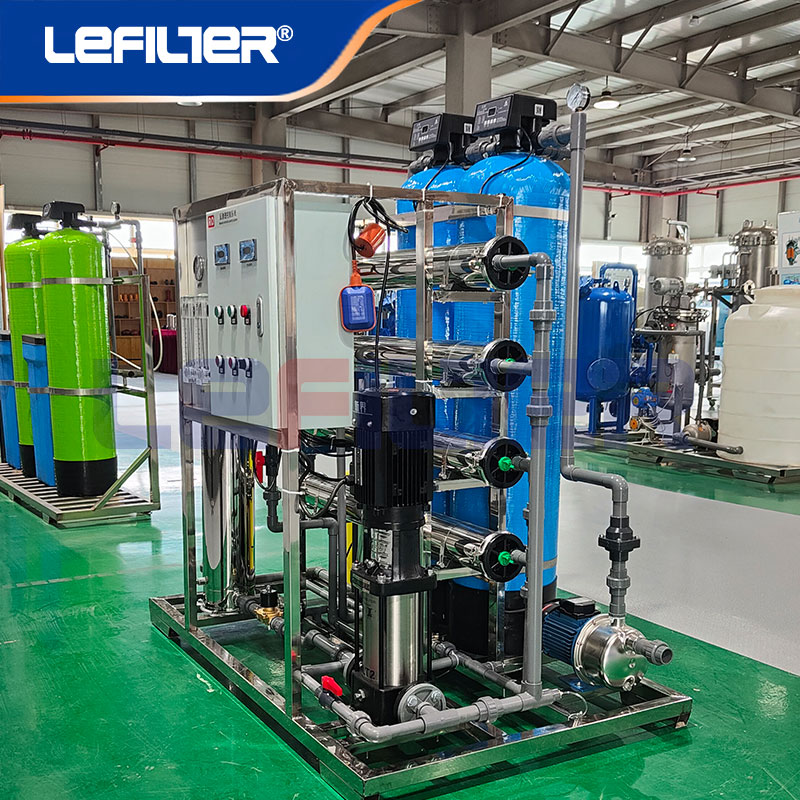Impact of Cooling Tower Blowdown Treatment on Operational Costs
DATE:2024-12-11 Number of views: 1 Source:dongwenhui
Cooling towers are integral to industrial and power plant operations, providing efficient heat removal to maintain process temperatures. However, their operation generates significant blowdown water—a concentrated stream of salts, minerals, and other impurities. Treating this blowdown water is not only vital for environmental compliance but also for minimizing corrosion, optimizing equipment efficiency, and controlling operational costs.
We explore the impact of cooling tower blowdown treatment, its significance in industrial processes, and the various methods used to enhance water quality while reducing costs.
Understanding Cooling Tower Blowdown
Cooling towers work by evaporating water to remove heat. However, evaporation leaves behind concentrated impurities, such as dissolved salts and minerals, which can cause scaling, corrosion, and biological fouling. To prevent these issues, a portion of the concentrated water—known as blowdown—is discharged and replaced with fresh water.
Without proper treatment, blowdown water can lead to:
Corrosion of metal components due to high salt concentrations.
Scaling, which reduces heat transfer efficiency and increases energy consumption.
Environmental harm if the discharged water does not meet quality standards.
Methods for Treating Cooling Tower Blowdown
Effective blowdown treatment involves removing contaminants to recycle water for reuse or ensure safe discharge into the environment.
1. Filtration Systems
Filtration removes suspended solids and particulate matter from blowdown water.
Sand Filters: These systems trap debris and particles using sand as the filtration medium.
Micron Filtration: Removes finer particles, improving water quality for recycling or discharge.

2. Softening Processes
Softening reduces hardness by removing calcium and magnesium ions.
Ion Exchange Systems: Replace hardness ions with sodium or potassium ions, preventing scaling in downstream processes.
Chemical Additives: Lime softening or soda ash treatment can precipitate hardness minerals.
3. Reverse Osmosis (RO)
RO is a membrane-based technology that removes dissolved salts and impurities by forcing water through semi-permeable membranes.
Effective for achieving high water recovery rates.
Produces high-quality water suitable for reuse in cooling towers.

4. Evaporation Systems
Thermal evaporators concentrate blowdown water, separating clean water for reuse and leaving behind solid residues.
Ideal for zero-liquid discharge (ZLD) systems.
Reduces the environmental impact of wastewater discharge.
5. Chemical Treatment
Chemical additives help control scaling, corrosion, and biological growth.
Antiscalants: Prevent scaling by inhibiting mineral crystallization.
Corrosion Inhibitors: Form protective layers on metal surfaces to reduce corrosion.
Biocides: Control bacterial growth, which can cause biofouling.
Benefits of Cooling Tower Blowdown Treatment
1. Reduced Corrosion and Scaling
Proper treatment minimizes the buildup of corrosive and scaling agents, extending the lifespan of cooling tower components and reducing maintenance costs.
2. Enhanced Water Reuse
Treated blowdown water can be recycled back into the cooling system, reducing freshwater demand and wastewater disposal costs.
3. Environmental Compliance
Meeting regulatory standards for wastewater discharge helps avoid fines and enhances the company’s reputation for sustainability.
4. Improved Equipment Efficiency
Clean, treated water ensures optimal heat transfer efficiency, lowering energy consumption and operational costs.
5. Cost Savings
While the initial investment in treatment systems can be significant, the long-term savings from reduced maintenance, water consumption, and energy use outweigh the costs.
Case Studies of Successful Blowdown Treatment
1. Chemical Plant in Texas, USA
A large chemical plant integrated an RO system to treat cooling tower blowdown. This reduced the plant’s water consumption by 40%, leading to annual savings of $250,000 and significant environmental benefits.
2. Steel Manufacturing Facility in India
A steel plant implemented a combination of softening and thermal evaporation systems. This enabled the plant to achieve zero-liquid discharge, complying with local regulations while reducing freshwater costs by 50%.
3. Power Plant in Australia
A coal-fired power plant used advanced filtration and chemical treatment for blowdown water. The treated water was recycled into the cooling system, cutting water use by 30% and saving $500,000 annually in water procurement costs.
Challenges in Blowdown Treatment
1. High Initial Investment
Installing advanced treatment systems like RO or evaporation units requires substantial capital expenditure.
2. Energy Consumption
Processes like RO and thermal evaporation are energy-intensive, potentially increasing operational costs if not optimized.
3. Disposal of Residues
Concentrated brine and solid residues from blowdown treatment require proper disposal to prevent environmental harm.
4. System Maintenance
Regular maintenance is necessary to prevent fouling and scaling in treatment systems, adding to operational expenses.
5. Variability in Water Quality
Fluctuations in raw water quality can affect the performance of blowdown treatment systems, requiring frequent adjustments.
Future Innovations in Blowdown Treatment
AI and IoT-Driven Systems
Real-time monitoring and predictive analytics can optimize blowdown treatment processes, improving efficiency and reducing costs.Advanced Membranes
The development of anti-fouling and energy-efficient membranes will enhance RO system performance.Integrated Solutions
Combining multiple treatment methods, such as RO and evaporation, in compact systems for better scalability and flexibility.Solar-Powered Systems
Using solar energy to power thermal evaporation and filtration processes, reducing the carbon footprint.Resource Recovery
Advanced technologies to recover valuable minerals and salts from blowdown water for industrial reuse.
Conclusion
Cooling tower blowdown treatment is essential for sustainable and cost-effective industrial operations. By employing advanced technologies like filtration, RO, and evaporation, industries can minimize corrosion, enhance water quality, and achieve significant cost savings. Although challenges exist, continuous innovations and efficient system management will ensure that blowdown treatment remains a cornerstone of modern industrial water management.
FAQ
What is cooling tower blowdown?
Cooling tower blowdown refers to the discharge of water containing concentrated impurities from a cooling system.Why is blowdown treatment important?
Blowdown treatment prevents corrosion, scaling, and environmental harm while improving water reuse and operational efficiency.What methods are used for blowdown treatment?
Common methods include filtration, reverse osmosis, softening, thermal evaporation, and chemical treatment.What are the benefits of treating blowdown water?
Benefits include reduced corrosion, enhanced water reuse, environmental compliance, and cost savings.What challenges are associated with blowdown treatment?
Challenges include high initial costs, energy consumption, and residue disposal.How does blowdown treatment save costs?
By reducing water consumption, maintenance needs, and energy use, blowdown treatment lowers overall operational expenses.Can blowdown water be recycled?
Yes, treated blowdown water can be reused in cooling systems, significantly reducing freshwater demand.What is the future of blowdown treatment technology?
Future trends include AI-driven optimization, advanced membranes, integrated solutions, and solar-powered systems.


